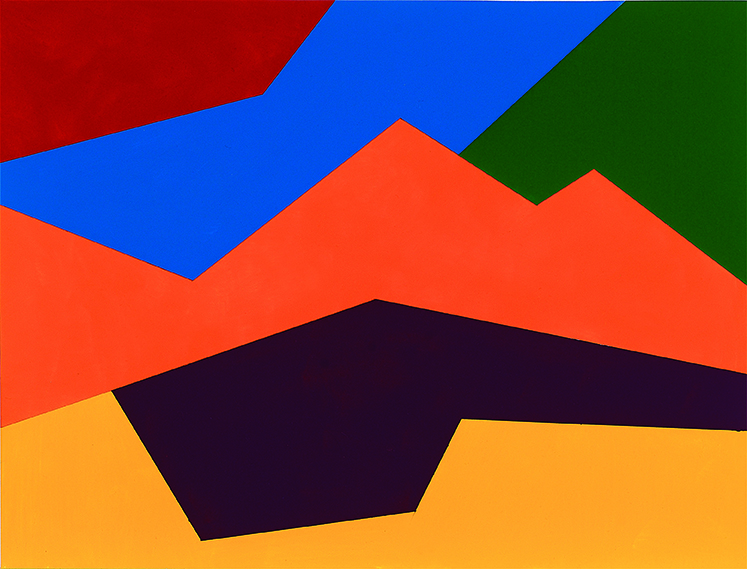John Nixon
EPW: POLYCHROME
EPW: POLYCHROME presents over 100 new multi-coloured paintings from John Nixon’s Experimental Painting Workshop in 2006–2007 when he began to work with the idea of colour in different formats. The Polychrome paintings stem from Nixon’s use of colour in his earlier monochrome paintings, here using his signature orange alongside other colours. Horizontal or vertical stripes of even widths both thin and thick appear in the vast majority of these hard-edged paintings. Whilst examples of stripe and multi-coloured paintings have appeared in his work before, this new body of works specifically concentrate on these themes, making this Nixon’s first exhibition dedicated to the polychrome.
Horizontal or vertical stripes of even widths both thin and thick appear in the vast majority of these hard-edged paintings. These coloured stripes imply a sense of movement: from left to right, right to left, top to bottom etc. During 2006, Nixon had begun to work with the idea of colour-rhythm, an idea pertinent to the Italian Futurists, and he describes the coloured stripes in these paintings as ‘akin to speed on a freeway, the colours stream across the surface and into the surrounding space.’
Other groups of paintings extend Nixon’s ideas to do with colour and movement into the expanded field: Colour-rhythm (film composition), paintings towards animated films; and Colour-rhythm (music composition,) paintings to be used as musical compositions for electric or grand piano; and Colour-rhythm disks, paintings done on vinyl records, presented on a turntable and long trestle table. The spinning discs demonstrate actual colour-movement as distinct from the implied colour-movement of the paintings. A further group of works the artist refers to as Colour-dynamism paintings use the dynamics of interlocking diagonals, triangles and wedges to activate the painting surface. Also included are some examples from a group of paintings currently in development entitled Colour-fracture using broken diagonals and angular shapes.
